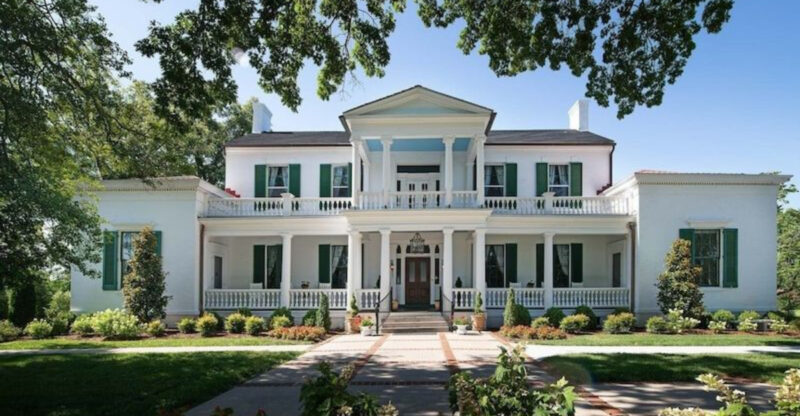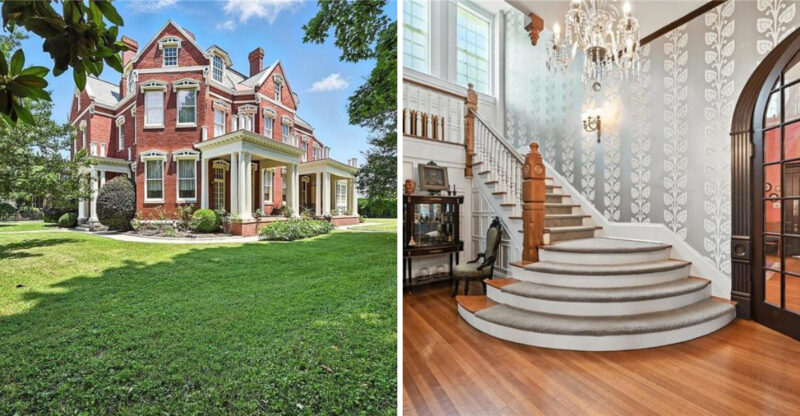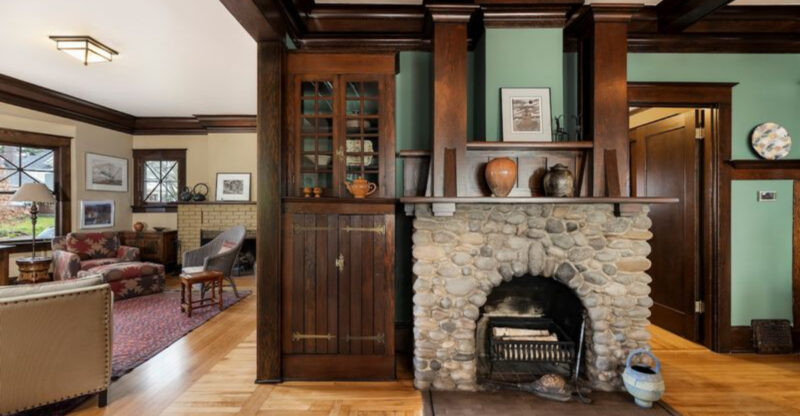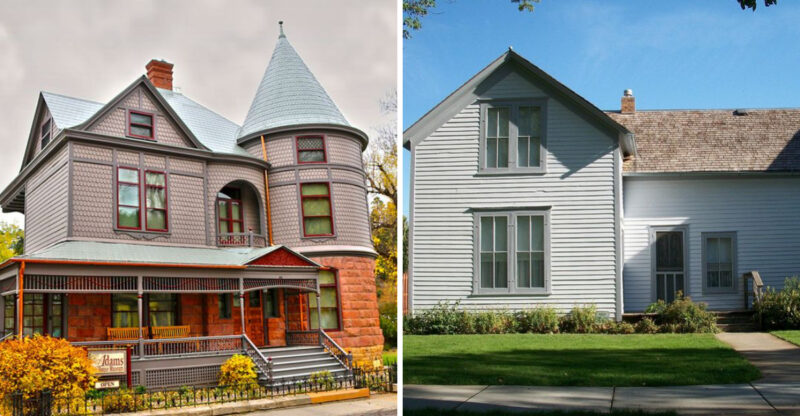Discover Enchanting Historic Homes Across North Carolina
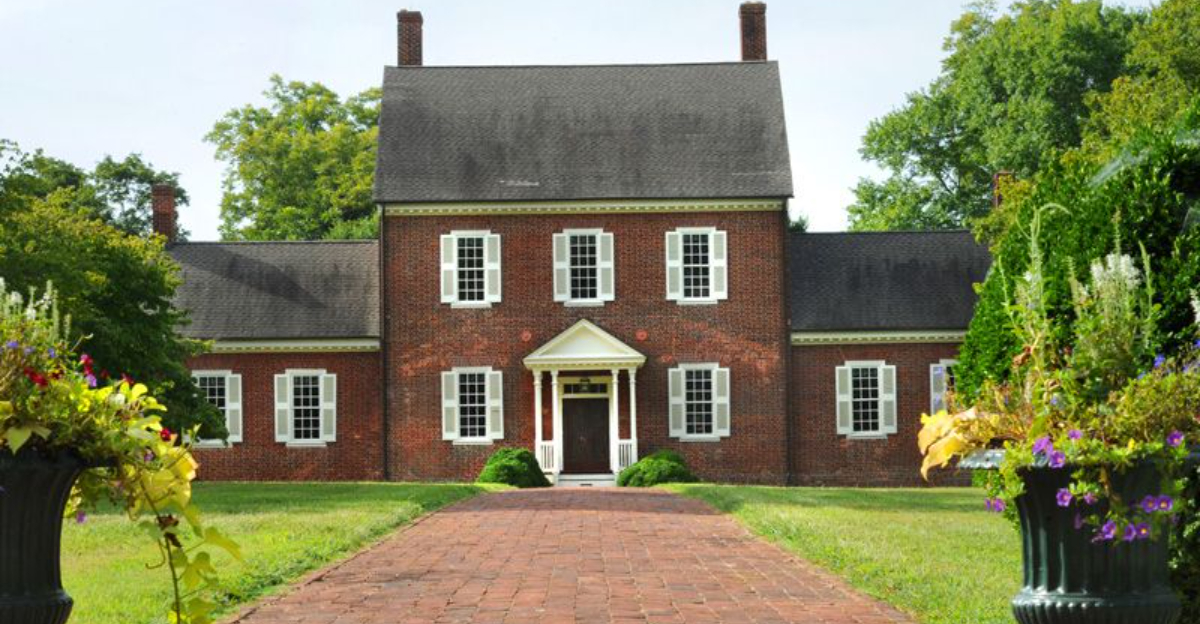
North Carolina holds some of the most beautiful old houses you’ll ever see. Walking through these historic homes feels like stepping back in time to another era.
Each mansion tells unique stories about the people who lived there and the events that shaped our state. Get ready to explore stunning architecture and fascinating history!
1. Biltmore Estate In Asheville
America’s largest private home will absolutely blow your mind with its 250 rooms. George Vanderbilt built this French Renaissance castle back in the 1890s. It took six years and thousands of workers to complete this masterpiece.
You can tour dozens of rooms filled with original furniture and priceless artwork. The gardens stretch for miles with colorful flowers blooming every season. I love how the basement has a bowling alley and an indoor pool!
Walking through feels like visiting royalty in their palace.
2. Tryon Palace In New Bern
Did you know North Carolina’s first capitol building stood right here? Royal Governor William Tryon lived in this elegant Georgian mansion during colonial times. British soldiers once marched through these very halls before the Revolutionary War started.
Today you can explore the reconstructed palace with period furniture from the 1700s. Costumed guides share stories about colonial life and political intrigue. The formal gardens outside showcase plants that colonists would have grown.
It’s amazing to imagine our state’s history unfolding in these rooms.
3. Mordecai House In Raleigh
Andrew Johnson, who became president, was actually born in a tiny building on this property. The Mordecai family lived here for generations starting in 1785. Their plantation once covered thousands of acres around what’s now downtown Raleigh.
You’ll see how wealthy families lived with fancy furniture and beautiful decorations. The kitchen building stands separate from the main house like most plantations had. Original family portraits hang on the walls watching over visitors.
It’s wild thinking this farm existed before Raleigh became our capital city!
4. Bellamy Mansion In Wilmington
This stunning white mansion survived the Civil War despite Union troops occupying Wilmington. Dr. John Bellamy designed his dream home with 22 rooms and soaring ceilings. Construction finished right before the war changed everything for Southern families.
Corinthian columns tower above you as you approach the front entrance. Inside, elaborate plasterwork and chandeliers show off the family’s wealth. The slave quarters behind the mansion tell a contrasting story about who built this beauty.
Restoration took years to bring back its original grandeur.
5. Duke Mansion In Charlotte
James Buchanan Duke, the tobacco and energy tycoon, built this elegant home in 1915. His family’s fortune helped create Duke University and powered much of the Carolinas. The mansion sits in a quiet Charlotte neighborhood surrounded by old trees.
Colonial Revival architecture gives it a stately yet welcoming appearance. You can actually stay overnight here since it operates as a historic inn. The sunroom and library are particularly cozy spots to relax.
Imagine sipping lemonade on the porch like the Duke family once did!
6. Korner’s Folly In Kernersville
Jule Korner designed the weirdest and most wonderful house you’ll ever explore. No two rooms have the same ceiling height in this seven-level home. People called it Korner’s Folly because the design seemed absolutely crazy for the 1880s.
Twenty-two rooms fill this architectural experiment with hidden doors and unexpected staircases. Jule used his home as a showroom for his interior design business. The tiny third-floor theater is barely big enough for a dozen people!
Every corner reveals another delightful surprise waiting to be discovered.
7. Poplar Grove Plantation Near Wilmington
Peanuts made this plantation prosperous back in the 1800s before the Civil War. The Foy family grew thousands of pounds of peanuts on their coastal property. Their Greek Revival manor house still stands proudly among the original outbuildings.
You can watch blacksmiths and weavers demonstrate crafts like people practiced centuries ago. The basket-weaving demonstrations are absolutely mesmerizing to observe. Farm animals roam the grounds just like they did during plantation days.
It’s a living history museum showing both the beauty and harsh realities of plantation life.
8. Hezekiah Alexander House In Charlotte
Charlotte’s oldest surviving house was built with rocks back in 1774. Hezekiah Alexander signed the Mecklenburg Declaration of Independence right here. His family farmed this land while revolutionary ideas spread through the colonies.
The stone walls kept the family cool during hot Carolina summers. Original log structures and a springhouse still stand on the property. Costumed interpreters cook meals using colonial recipes and techniques.
It’s incredible touching walls that witnessed the birth of American independence!
9. Carl Sandburg Home In Flat Rock
Famous poet Carl Sandburg spent his final 22 years writing at this peaceful mountain farm. He won three Pulitzer Prizes for his poetry and biography about Abraham Lincoln. His wife Lilian raised prize-winning dairy goats on the property.
The home remains exactly as the Sandburg family left it with books everywhere. You can hike five miles of trails around the 264-acre estate. Descendants of Lilian’s champion goats still graze the hillside pastures.
It’s easy to understand why this serene place inspired such beautiful writing.
10. Bennett Place In Durham
One of the largest troop surrenders in the Civil War happened at this humble farmhouse. Generals Johnston and Sherman met here to negotiate peace in April 1865. Their agreement affected nearly 90,000 Confederate soldiers across multiple states.
The small wooden house shows how ordinary farmers lived during wartime. Unity Monument outside commemorates the reconciliation between North and South. Reenactors sometimes demonstrate what soldier life was really like.
It’s powerful standing where enemies became fellow Americans again after years of fighting.
11. Thomas Wolfe Memorial In Asheville
Author Thomas Wolfe grew up in his mother’s boardinghouse called Old Kentucky Home. His novel Look Homeward Angel made this yellow house famous across America. Tourists started visiting even while the Wolfe family still lived here!
The Victorian home is crammed with original furniture and family belongings. Thomas’s childhood bedroom looks exactly as it did in the early 1900s. You can almost hear the boarders chatting in the dining room.
Walking through inspired me to reread his emotional stories about mountain life.
12. Ayr Mount In Hillsborough
William Kirkland built this elegant Federal mansion overlooking the Eno River in 1815. His poetry-writing wife designed the romantic gardens that still bloom beautifully today. The family entertained North Carolina’s most important politicians and artists here.
Symmetrical architecture and graceful proportions define this architectural gem. Original family furnishings fill the rooms with authentic period pieces. The garden paths wind through boxwoods planted two centuries ago.
Spring visits are especially magical when azaleas and dogwoods burst into colorful bloom!
13. Historic Edenton’s Cupola House
This quirky house features a rooftop cupola that ship captains used for spotting vessels. Built in 1758, it’s one of the finest Jacobean houses in the South. The wooden structure has survived hurricanes, wars, and centuries of coastal weather.
Ornate woodwork inside shows the craftsmanship of colonial builders. The cupola offers amazing views of Edenton Bay and Albemarle Sound. Restoration experts have carefully preserved original architectural details.
Climbing to the cupola makes you feel like a sea captain watching for sailing ships!
14. Reynolda House In Winston-Salem
Katharine Reynolds created an entire village around her family’s bungalow estate in 1917. Her tobacco fortune funded schools, churches, and a working farm on the property. She wanted a self-sufficient community for her family and workers.
The house now serves as a museum displaying American art masterpieces. You’ll see paintings by Georgia O’Keeffe and other famous artists. The restored village includes shops, gardens, and the original greenhouse.
It’s fascinating seeing how wealthy families mixed luxury with progressive social ideas!
15. Stagville Plantation In Durham
Once among North Carolina’s largest plantations, Stagville enslaved nearly 900 people before the Civil War. The preserved buildings tell important stories about enslaved families who lived here. Their two-story wooden houses are rare surviving examples of slave quarters.
Great Barn, built by enslaved workers, still stands as testament to their skills. Horton Grove features original slave dwellings where multiple generations lived. Educational programs honestly discuss the brutal realities of slavery.
Visiting helps us understand the full truth of our state’s complicated history.
16. Somerset Place In Creswell
Enslaved workers drained the swampland around Lake Phelps to create this massive rice plantation. Over 300 enslaved people lived and worked on this isolated coastal property. Their descendants still return for annual homecoming celebrations to honor their ancestors.
The restored mansion shows how the Collins family lived in luxury. Meanwhile, reconstructed slave cabins reveal the harsh conditions enslaved families endured. Archaeological digs continue uncovering artifacts from daily plantation life.
It’s a sobering reminder of who really built North Carolina’s agricultural wealth.

